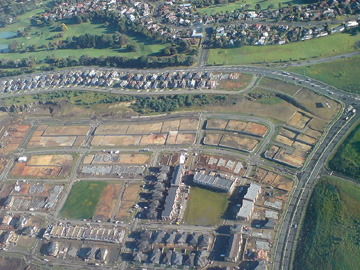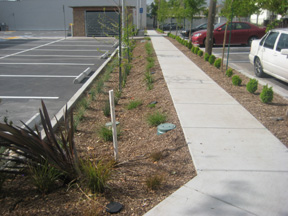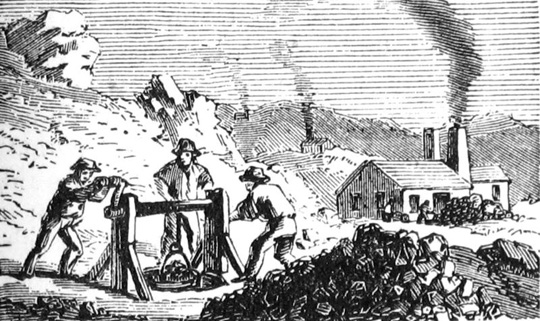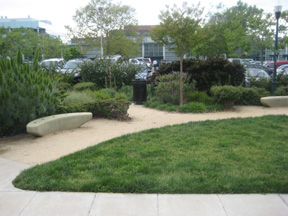| Home | Projects Blog Speaking and Consulting Approach / Explorations About Geoffrey Katz Contact | |||||
Speaking and Consulting
Geoffrey Katz helps organizations achieve value - discovering insights that create grounded, viable futures.
Geoffrey Katz helps design firms understand sustainable sites, helps design teams incorporate landscape-based processes in green building methods. Working as a team member or LEED landscape consultant Geoffrey Katz helps target high-performance projects through integrated design.
Geoffrey Katz educates businesses and organizations on how green building rating systems and green regulatory environments - impacting landscape and site in their projects and services - align with their business strategies.
Geoffrey's speaking style is energetic based on his commitment to the subject matter, interactive and entertaining through use of a variety of approaches and media; he provides insight and opportunity for personal engagement. Geoffrey customizes presentations to address the specific opportunities and issues of the audience.
Insights and experience - speaking areas
- LEED and landscape architecture
- Bay-friendly Landscape
- Sustainable sites
- Climate change and land-based operations and activities
- Water - stormwater management and water efficiency
- Native and urban-native plant communities
- Soil, mulch, and compost
LEED and landscape architecture
There are critical insights to the provisions of the LEED green building rating system that landscape architects may bring to a design project that are generally not suggested or developed by other design professionals. Effective design process management for green building design integrates these insights, together with the contributions of architects and engineers. What are the LEED measures required by municipal regulations and, in California, state regulation to achieve building permit?
Geoffrey Katz speaks and consults on effective design and detailing and on documentation, that can be implemented within the LEED system to achieve project certification.
Sustainable architectural design and construction increasingly represents the core of high quality architectural design among design professionals and the public. In the United States LEED and other green building rating systems represent to many developers, owners, professionals designers, regulatory agencies, and others the minimum standard for sustainable architectural design and construction.
What are the Bay-Friendly provisions that municipalities require for planning and building permit? How can Bay-Friendly practices reduce construction and operations costs? How can Bay-Friendly practices help create a landscape that is healthy and beautiful?
Adoption of the Bay Friendly Landscape (BFL) rating system is growing rapidly in the San Francisco Bay Area. Originally a project of the Alameda County (California) waste management authority to reduce landscape and garden "wastes" to local landfills, BFL has developed into an elaborate and comprehensive system to guide design, construction, and maintenance of sites, landscapes, and gardens. BFL is rooted in practical measures.
What are the site-based practices that a project can implement to achieve rating as a Sustainable Site? How can the provisions of the Sustainable Sites Initiative be used to achieve sustainable land development - for either open spaces or building projects?
Although LEED is well-known, many landscape architects have faulted it for perceived shortcomings in its site and landscape-related provisions. In response, the Sustainable Sites Initiative (Sites) has been developed by a collective lead by the American Society of Landscape Architects, the Lady Bird Johnson Wildflower Center, and the United States Botanic Garden. Currently Sites is testing the strengths of its provisions through pilot projects but Sites is still not broadly known among design professionals. Sites is recognized by the USGBC. It remains to be seen whether Sites establishes its own system of rating and certifying projects, becomes a recognized rating system within LEED, or has some other outcome.
Because of the rigorous contributions to Sites by scientists and designers it is a valuable resource when examining site, landscape, and garden design and construction issues.
Climate change and land-based operations and activities
Climate change creates risks and opportunities that will shape the future of business organizations, institutions, community-based organizations, and individuals. Once deemed to be a distant concern in time and space, the potential impacts of climate change are already dramatically evident in many places.
Geoffrey Katz speaks on, and supports and advises decision-makers, addressing a host of increasingly important questions: What does climate change mean for land-based operations and activities of my business? What opportunities or threats may result? What are possible new regulatory scenarios, and how will they affect my business? What does climate change mean for new community development?
Clients targeting low-carbon strategies related to their business practices may ultimately have a landscape expression of their business strategies - what site and landscape practices can help meet business strategies, regulatory environments, social and community demands - all the while providing enhanced outdoor character and enhanced public image to the organization?
… Will rising sea levels reach a one or four foot rise by the year 2100? Will average annual climate temperatures increase by 1, 2, or more degrees - and how will heat affect operations or employee health? Will the rise in temperature imply a drier environment, forcing changes in water use?
Water - stormwater management and water efficiency
Water availability is a challenge to many communities, businesses, and economies. It is likely to present even greater challenges in the coming years due to population growth in cities, the drying effects of climate change, and the current overconsumption of deep ground water aquifers.
Geoffrey Katz speaks on and works with clients to address water-related challenges in an integrated fashion - in design projects collaborating on stormwater management, building water needs, irrigation demand, and assisting developments and companies to strategically review their water use and prepare water resource plans.
Native and urban-native plant communities and landscape ecological practices
"Right plant right place" these days may best refer to selecting species from within local native plant communities, if the project is in a more wildland area, or selecting species from within the local urban-native plant community, if the project is in an urban or sub-urban area.
Enhancing biodiversity - the number and quantities of native species - is perhaps the single most important step towards community (plant and perhaps human as well) resilience. Enhancing landscape connectivity is perhaps the single most important step to counter loss of habitat and species extinction.
Soil is the foundation for a successful planted landscape. Building or protecting soil in a design project is a worthwhile objective toward achieving a sustainable site, and LEED, Bay-Friendly, or other green building rating system certification.
Mulch covers the ground. It's typically available in many varieties and applications. Mulch can retain soil moisture, protect the soil from foot traffic, reduce erosion, enhance plant and vegetable production, deter weeds, and more.
Compost feeds the soil slowly - no blast of chemical fertilizers! - and builds soil structure, retains moisture, and creates habitat for earth organisms.
Sourcing mulch and compost locally from recycled yard wastes, food trimmings, and wood debris helps create a cost-effective, sustainable landscape.
More
Geoffrey Katz has
instructed at the
Email Geoffrey Katz for his speaking fee and other information gkatz2 (at) earthlink.net.
|
|
|||||||||||||
|
|
|
||||||||||||



